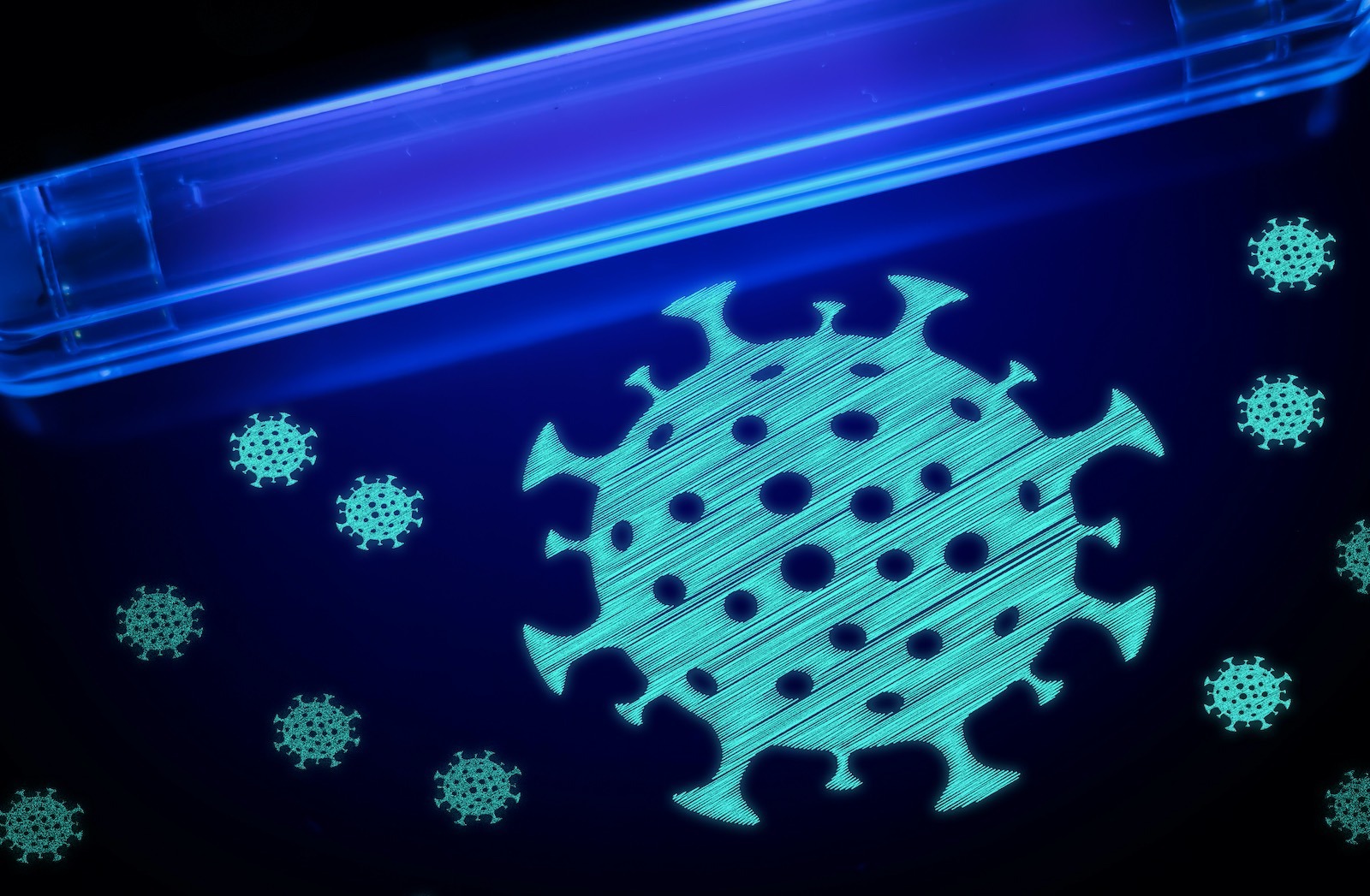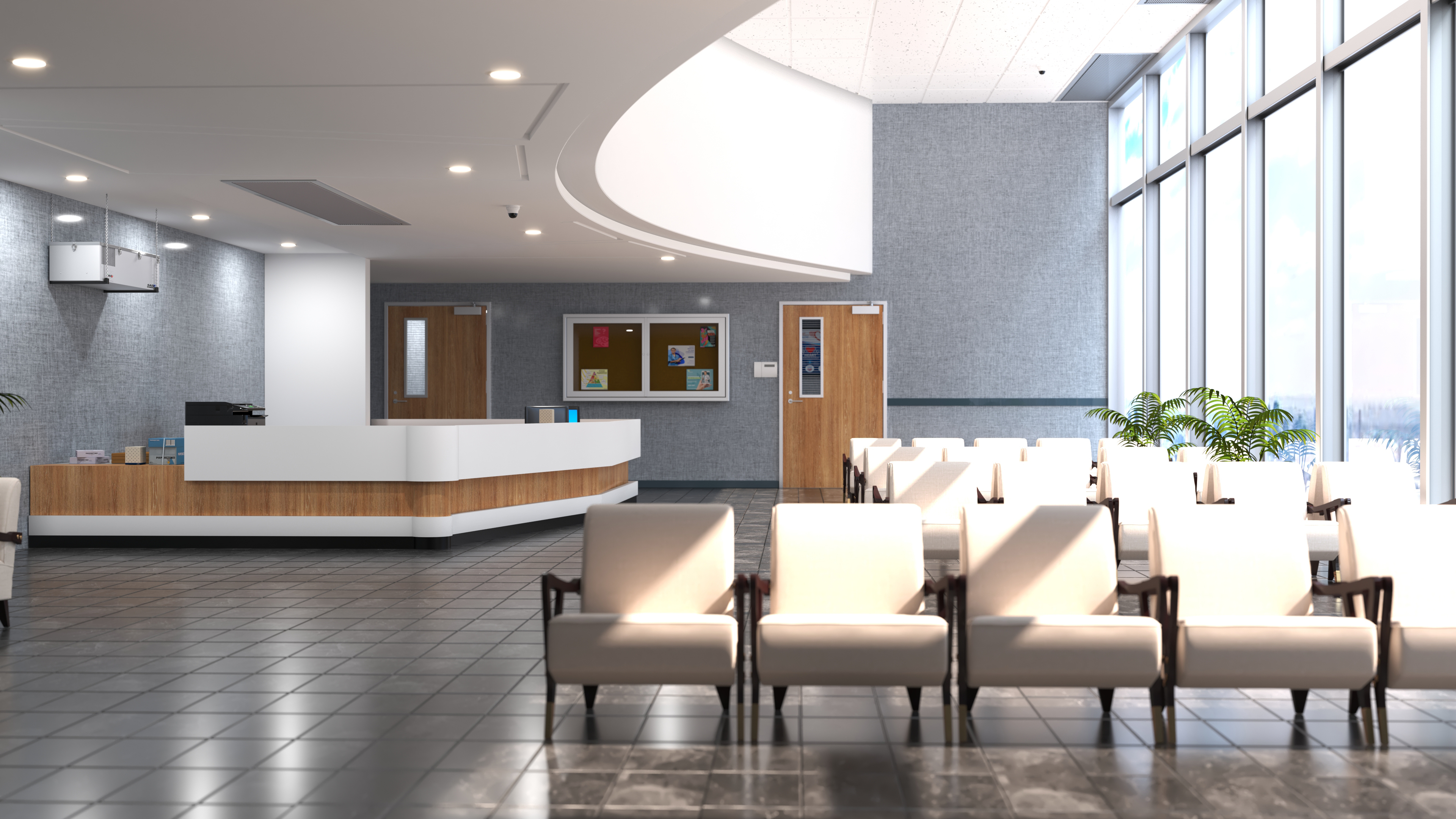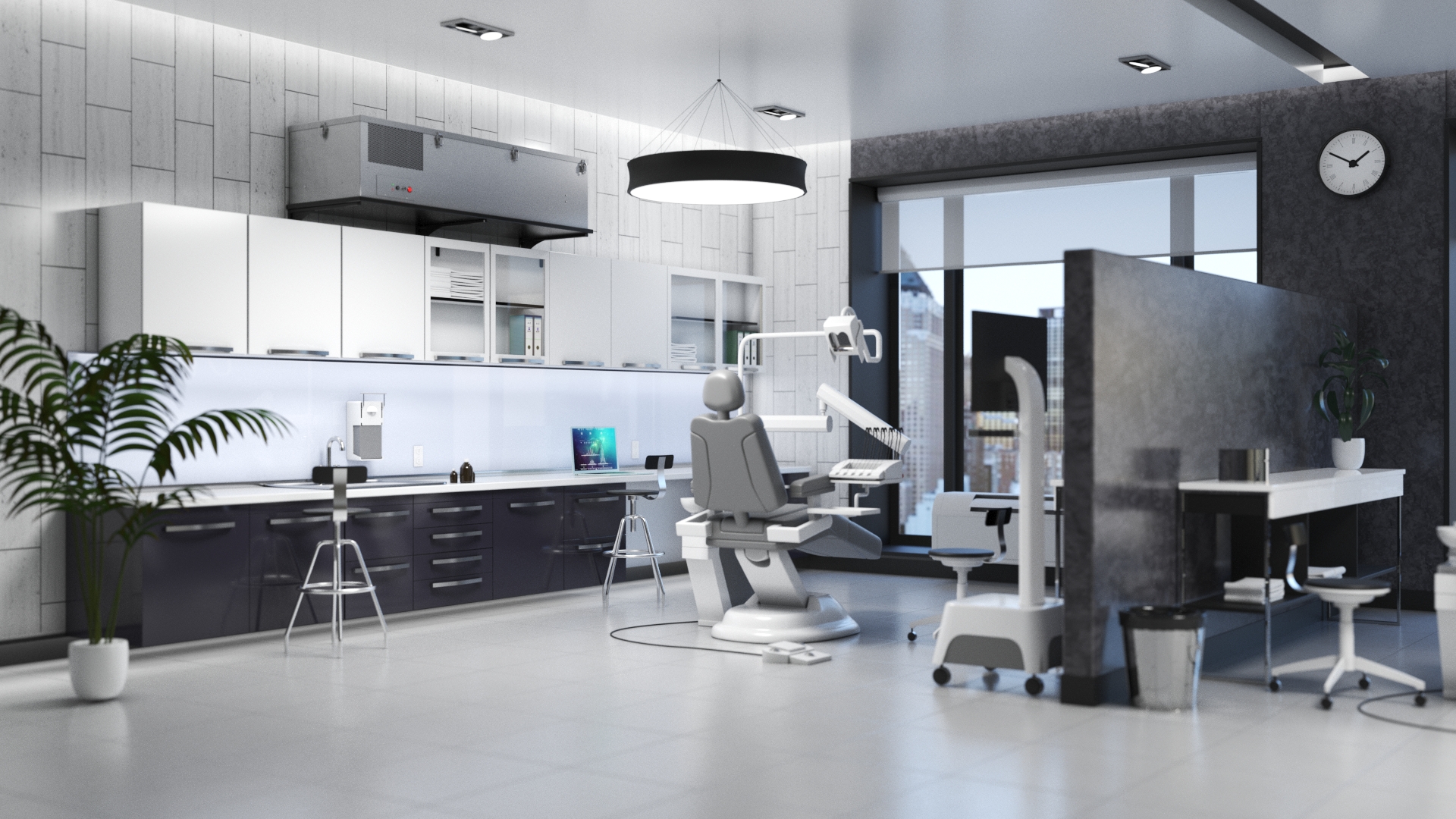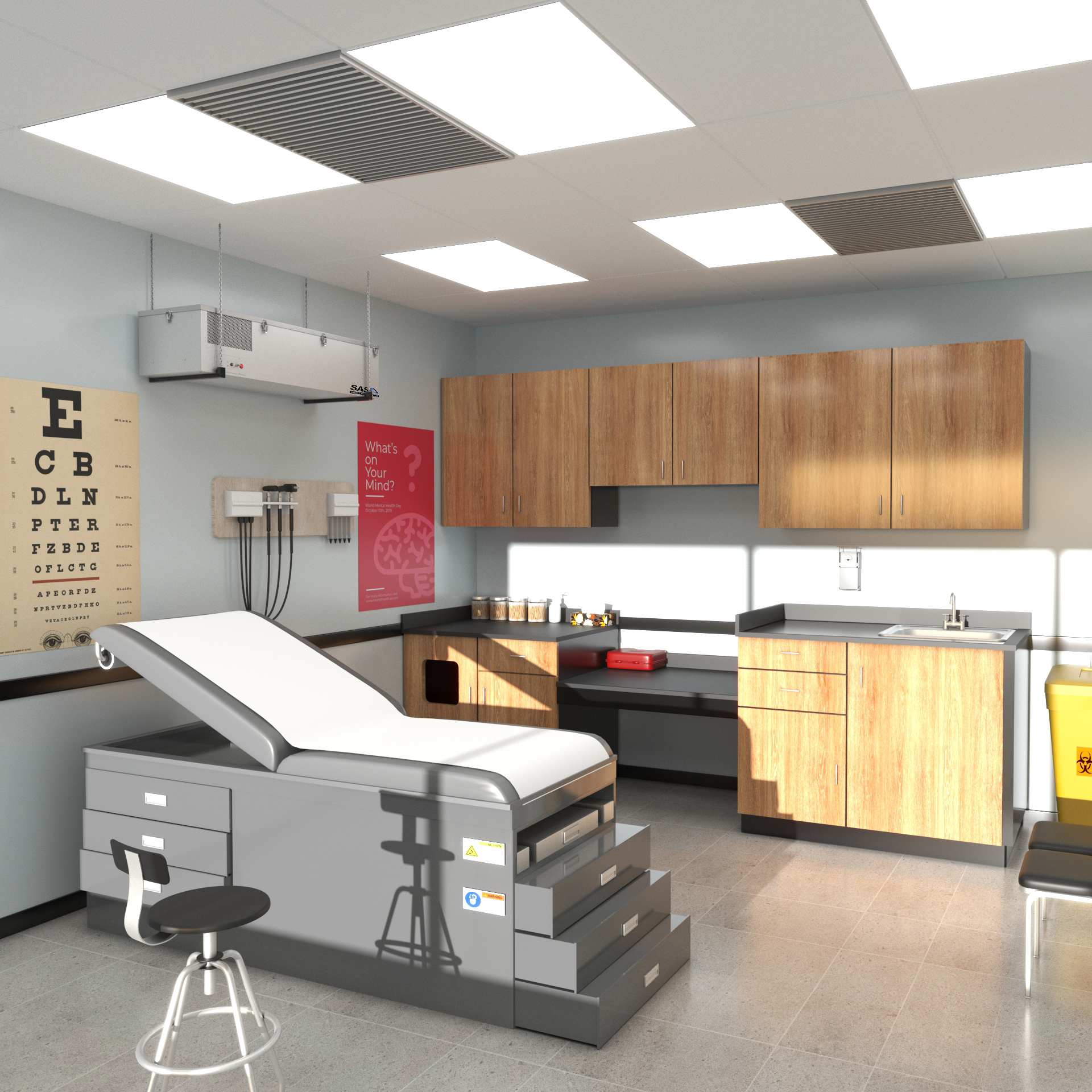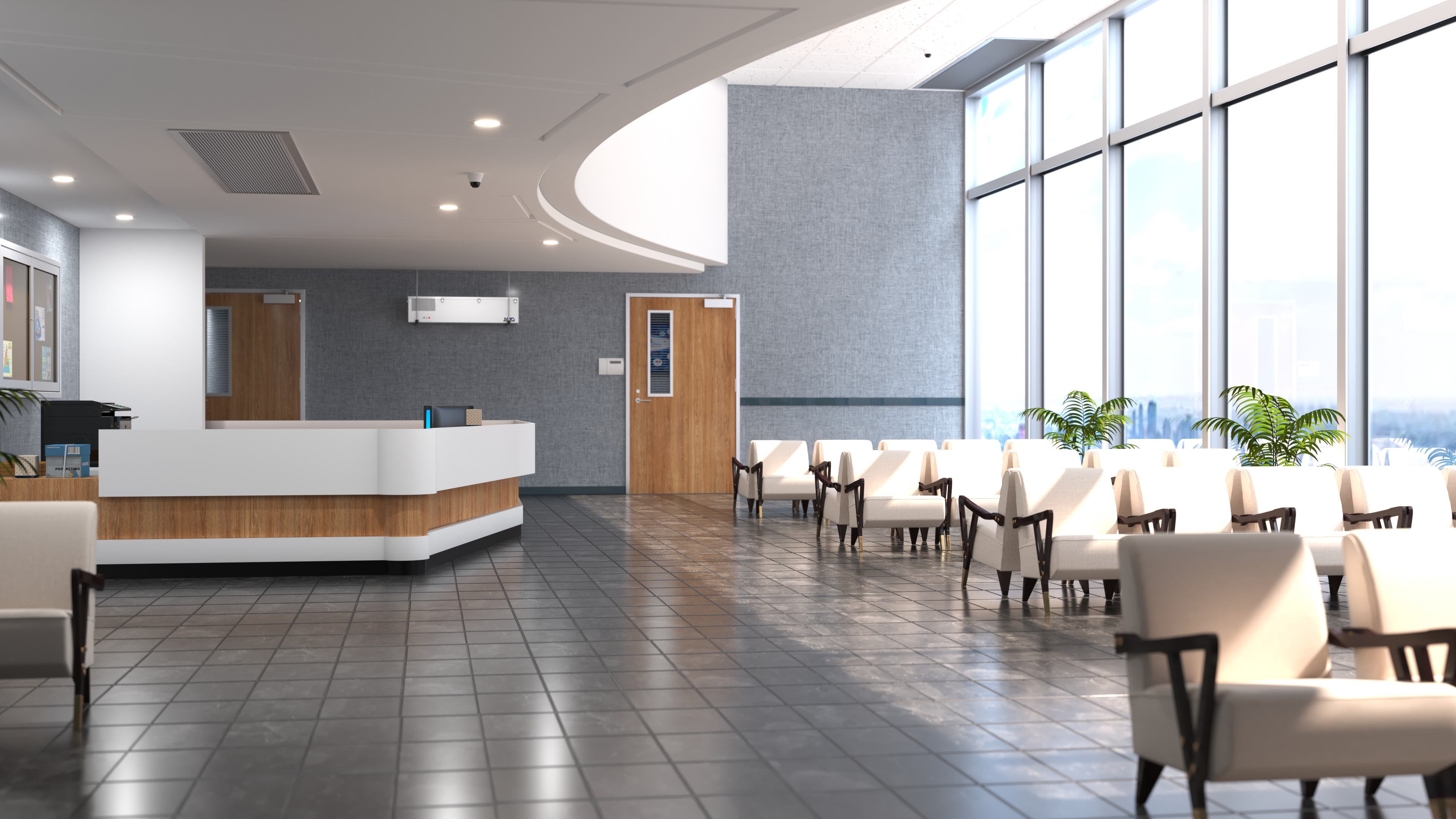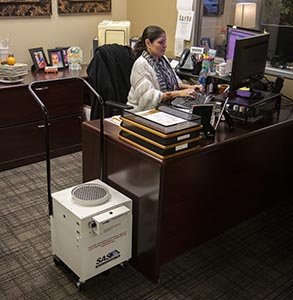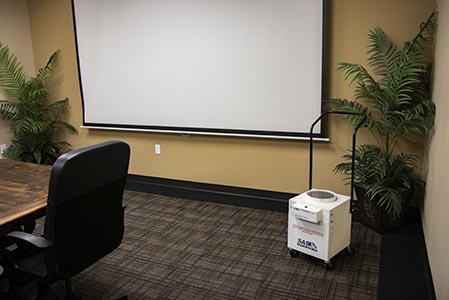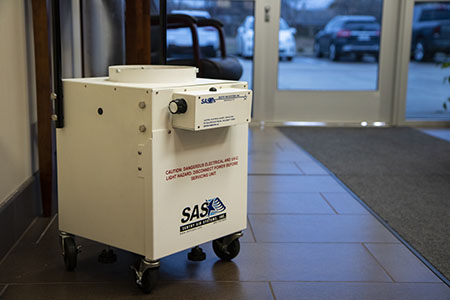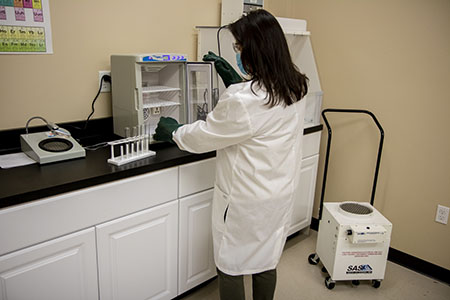Commercial UV Air Purifier
Commercial UV Air Purifiers utilize UV-C light technology to improve indoor air quality and provide protection against germs, bacteria and viruses. These powerful air purification systems use UV-C light to deactivate microorganisms by damaging their DNA and/or RNA (Ref. 1) in order to stop reproduction and help reduce disease transmission.
AirGuardian Pro
Model # SS-XXX-XXX
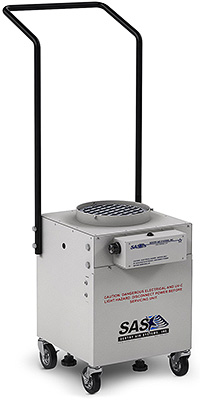
Unit Configurations Quick Compare
Additional Configurations
What is a Commercial UV Air Purifier?
A Commercial UV Air Purifier uses a powerful airflow and UV-C light to help reduce disease transmission through a process called germicidal irradiation. Germicidal irradiation reduces the reproduction of microorganisms by damaging the DNA/RNA. These systems do not use traditional HEPA filters but instead have pre-filters to catch large particles and purify the air with UV light.
How does a Commercial UV Air Purifier work?
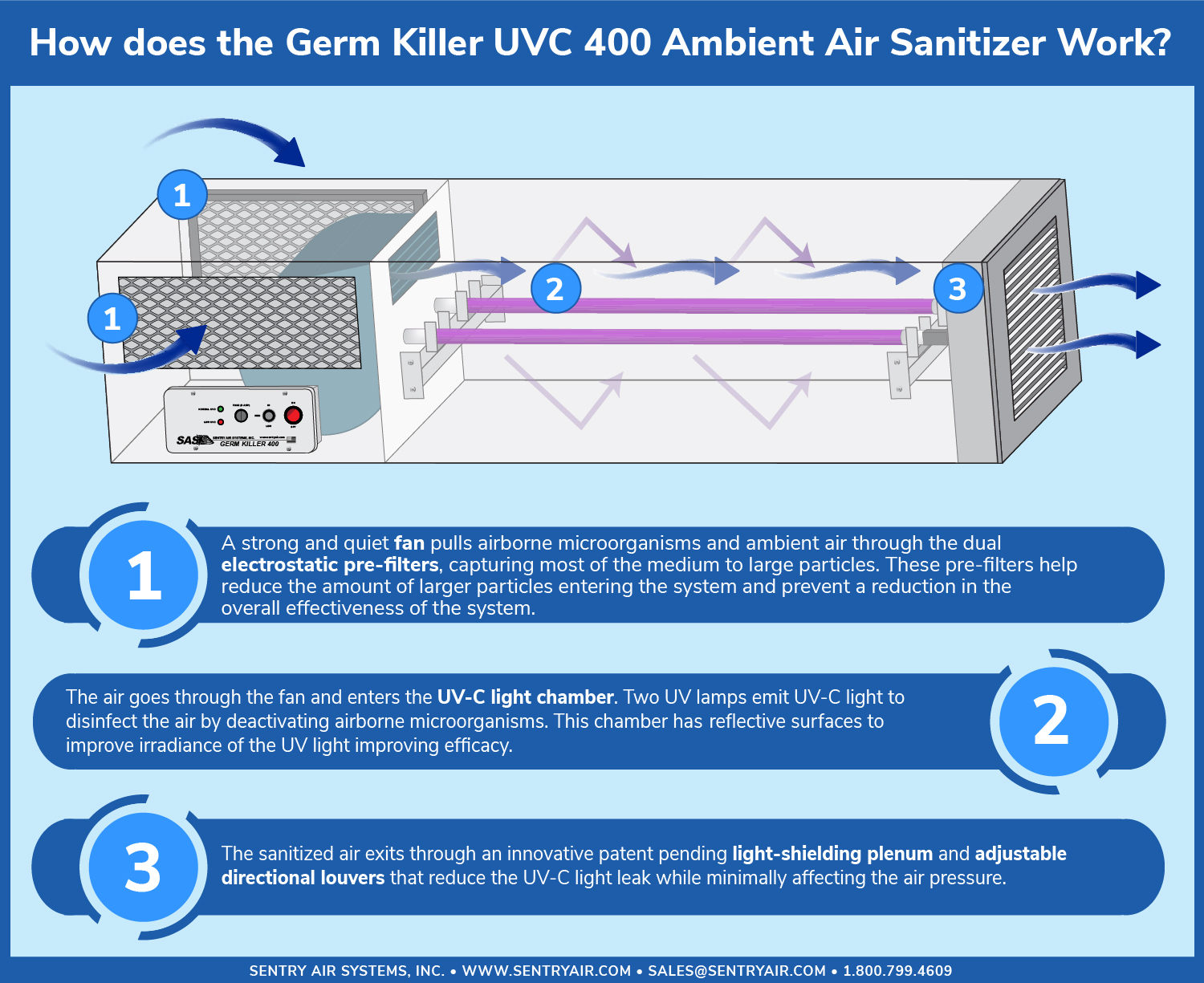
Recommended applications for a Commercial UV Air Purifier
- Schools
- Hospitals
- Medical Clinics
- Nursing Homes
- Day Cares
- Office Spaces
- Virus Testing Centers
- Dental Offices
- Highly Populated Indoor Areas
Features & Benefits of Germ Killer Commercial UV Air Purifier
The Germ Killer UV Air Purifier offers an enhanced design with improved safety and efficiency features. This system was stringently tested both in the Sentry Air Systems’ factory and by a 3rd party lab to ensure UV-C and ozone safety.
General Features
- Adjustable airflow control: 300, 375, or 450 CFM
- Two high-intensity UV-C light bulbs
- Uses UV-C light with shorter wavelengths to improve penetration of microorganisms
- Patent-pending design
Safety Features
- Leakproof UV-C light cabinet with light leak reduction design features (refer to brochure for more information)
- 3rd party tested for UV-C and ozone readings
- A safety interlock prevents the unit from working if the lid or filters are not in place
Efficiency Features
- Dual inlets feature electrostatic cleanable pre-filters to remove large particles reducing particle build-up on the bulbs and reflective surfaces to help prevent a reduction in effectiveness.
- Reflective surfaces in the disinfection area increase irradiance of the UV-C light and improve efficacy.
- A UV light sensor and LED lights indicate if the unit is supplying sufficient UV-C light to improve efficiency and reduce particle build-up on the light bulbs.
What is UV Light?
UV light is a type of electromagnetic radiation that falls between visible light and x-rays on the electromagnetic spectrum (Ref. 2). The sun emits UV light making up about 10% of the sun’s light — 95% UV-A and 5% UV-B light (Ref. 2). UV-C light, the 3rd type of UV light, is blocked from the earth’s surface by the ozone layer and water vapor in the earth’s atmosphere (Ref. 2).
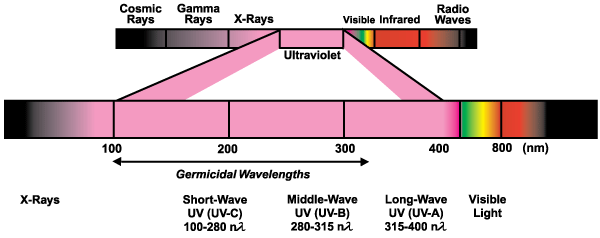 Electromagnetic Spectrum Ref. 10
Electromagnetic Spectrum Ref. 10
UV Light ABC's
UV-A
UV-A light makes up 95% of the UV rays emitted from the sun. Tanning beds use UV-A light leading to the development of wrinkles and premature skin aging (Ref. 3). UV-A light can also be called near UV with a wavelength between 315 and 400 nanometers (nm) (Ref. 2).
UV-B
UV light emitted from the sun contains about 5% UV-B light (Ref. 3). UV-B light can cause sunburns by penetrating the top layer of the skin, and damaging DNA leading to the development of skin cancer (Ref. 3). UV-B light is also referred to as middle UV with wavelengths between 280 – 315 nm (Ref. 2).
UV-C
UV-C differs from other UV light in that it only exists on earth artificially because the ozone completely blocks all of the natural UV-C light from reaching the earth’s surface (Ref. 3). UV-C light has a proven germicidal wavelength of 253.7 nm shown to deactivate influenza, H5N1, SARS, MERS-CoV, and the coronavirus (Ref. 4). UV-C light impairs living organisms through ionization (Ref. 1). The electrons break away from the atoms causing chemical bonds to break injuring the cell’s DNA or RNA. In viruses, this stops the cells from reproducing rendering the virus inactive. In addition to viruses, UV-C light can be used to deactivate mold spores and bacteria (Ref. 5).
Far-UVC Light
Recent research has explored Far-UVC light as an inexpensive way to reduce disease transmission in public places (Ref. 6). Far-UVC light has a wavelength of 207 or 222 nm with a very limited penetration depth (a few micrometers). Because of this, far-UVC light does not penetrate human skin or eyes offering a safer UV light for disinfection. Studies have shown that with low doses of 222 nm far-UVC light, H1N1, and other human coronaviruses are rendered inactive after exposure – 90% after 8 minutes and 99.9% after 25 minutes (Ref. 6).
Does UV Light Purify Air?
Yes, UV-C light can purify air — BUT UV-C light must be used accurately to be effective at inactivating microorganisms. Accurate use includes administering the right kind of UV light, the correct dosage, and UV lamps quality control (Ref. 1). Home or consumer portable air cleaners with UV light lack quality control processes and high intensity UV bulbs leading to a lower than the marketed effectiveness. This inefficiency poses a problem because behavior changes dramatically with a “disinfected” object and could lead to an increase in disease transmission (Ref. 3).
A 2020 study conducted by Boston University and Signify Research found that UV light with an irradiance of 0.849 mW/cm2 partially inactivated the coronavirus after 0.8 seconds and reduced it to below detectable levels after 9 seconds for dried and 4 seconds for wet samples (Ref. 8). The Germ Killer uses a UV light that produces an irradiance of 8.0 mW/cm2 or 10 times stronger. This could mean if conditions matched the study, the dry samples could reach below detectable levels in 1/10 of the time or 0.9 seconds, and wet samples after 0.4 seconds. These figures are strictly theoretical and not guaranteed. Please see our brochure for other calculations on effectiveness of the Germ Killer against popular microorganisms.
At the same time, UV light cannot rid air of other contaminants such as dirt, pollen, pet dander, other allergens, and odors. Air purification systems must utilize a mechanical filter such as HEPA filters for capturing airborne particulate and activated carbon filters for odor and chemical fume control (Ref. 9).
.Product Video
Cabinet Dimensions:
- 15.5”L x 13” W x 17” H (includes inlet & control
box)
Blower Material:
- 16 Ga. carbon steel with polyester epoxy coating on all surfaces
Weight:
Approximately 65 lbs (varies with filter media)
Air Volume:
High: Up to 350 CFM
Low: Down to 50 CFM
Electrical:
115/1/160, 2 amps
8’ grounded power cord with NEMA 5-15P plug
Sound Level:
58 to 66 dba (low to high)
Warranty:
Limited one-year warranty from date of shipment on defects due to materials or workmanship.
Patented Design:
U.S. PATENT #5,843,197
Product Video
Base Unit Dimensions:
- 53”L x 17” W x 12.5” H
Cabinet Material:
- Stainless Steel
Weight:
88.5 lbs.
Air Volume:
High: 450 CFM
Medium: 375 CFM
Low: 300 CFM
Electrical:
115/1/60, 2.2 amps
NEMA 5-15P plug
Sound Level:
High: Approximately 56.3 dba
Low: Approximately 48.8 dba
Filters:
Washable polypropylene pre-filter
Warranty:
Limited one-year warranty from date of shipment on defects due to materials or workmanship. No warranty on bulbs.
Quick Compare

AirGuardian Pro
|
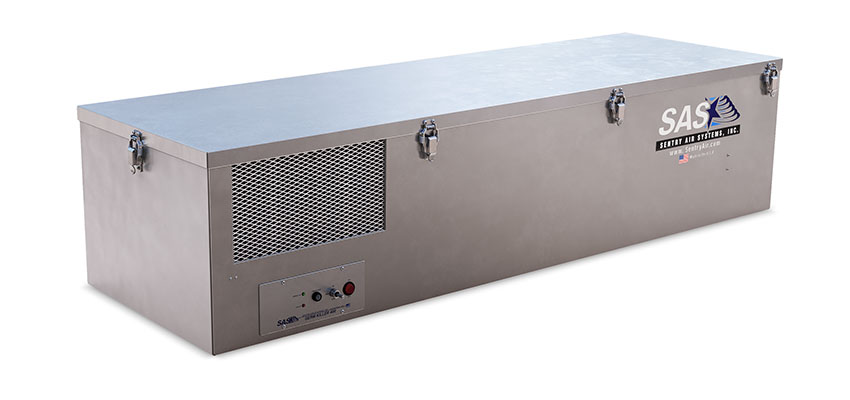
Germ Killer™ UVC
|
|
|---|---|---|
| Cabinet Dimensions: | - 15.5”L x 13” W x 17” H (includes inlet & control | - 53”L x 17” W x 12.5” H |
| Weight: | Approx. 65 lbs. | Approx. 88.5 lbs. |
| Electrical | 115/1/60, 2 amps | 115/1/60, 2.2 amps |
| Sound Level | 58 to 66 dba (low to high) | High: Approximately 56 dba Low: Approximately 49 dba |
Resources
- Coffey, Donavyn. “Does UV Light Kill the New Coronavirus?” Live Science. 12 July 2020.
- Lucas, Jim. “What is Ultraviolet Light?” Live Science, 15 Sept 2017
- “How UV Light is Used in Air Purification,” Oransi.
- McDevitt, J. J., Rudnick, S. N., & Radonovich, L. J. “Aerosol Susceptibility of Influenza Virus to UV-C light,” Applied and Environmental Microbiology, 2012, 78(6), 1666–1669.
- “Does Ultraviolet (UV) Radiation from UV Lamps Kill Mold?” US EPA.
- Buonanno, M., Welch, D., Shuryak, I. et al. “Far-UVC Light (222 nm) Efficiently and Safely Inactivates Airborne Human Coronaviruses.” Science Reports 10, 2020, Article # 10285.
- “Filtration/Disinfection,” ASHRAE
- Birru, Dagnachew., Cennini, Giovanni., de Samber, Marc., Downs, Sierra., Griffiths, Anthony., Johnson, Rebacca., McKay, Lindsay., Storm, Nadia., Willaert, Walter. Rapid and complete inactivation of SARS-CoV-2 by ultraviolet-C irradiation, Scientific Reports. 30 December 2020.
- Kerins, Ian. “How Do UV-Light Air Purifiers Work?” Molekule Blog. 5 Nov 2018.
- What is ultraviolet?

 Made in the USA
Made in the USA
